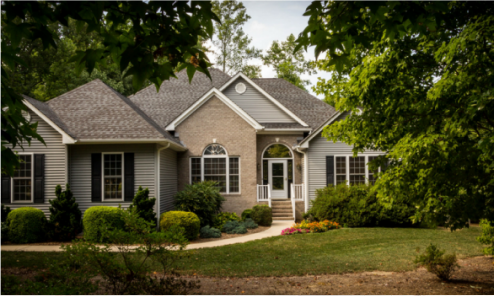Homes burn through a mortifying 21% of the energy used in the United States. Installing air sealing insulation in your home maybe isn’t the first thing you do when you buy a home, but it should be. Every time air escapes your home or comes into your home it generates issues like poor air quality, possible moisture accumulation and drafts affecting comfort level. Investing in properly air sealing your home ensures structural longevity, allows for optimal control of ventilation and keeps energy consumption lower. This is especially important in the summer when temperatures can climb high and you’re likely to notice air leakage issues with your home.
What Is Air Sealing?
Air leakage refers to air escaping your home through crevices, cracks, soffits, joists, electrical boxes and other vulnerable points of a homes envelope. The best way to combat that is through use of air sealing insulation. Air sealing your home to reduce air leakage can be done through caulking and use of weatherstripping. There are a number of foam sealants on the market that can also be used for large gaps where substantial air leakage occurs.
The Stack Effect
A large amount of air leakage occurs because of something called the stack effect, or chimney effect, which works like this: cold air infiltrates your cellar through leaks and cracks in the foundation and walls, and begins rising. It works its way up through the floors and/or walls, then up into your attic through structural defects, holes in your ceiling, recessed lighting, leaky duct work, the furnace flute, the plumbing stack, or a poorly sealed attic floor.
Common Points For Air Leakage In A Home

- Attic (fans/vents)
- Duct shaft
- Plumbing penetrations
- Recessed lighting
- Chimney shaft
- Fireplace
- Windows
- Doors
How To Detect Air Leakage
The best way to know if and where air leakage is occuring in your home is through a comprehensive home energy audit. A home energy audit will help you identify all the ways your home wastes energy and money. This is the first step toward a more comfortable, affordable and healthier home. Typically an infrared camera is used to find deficits in insulation.
A home energy audit should include all the possible envelopes of the home. The envelope of a home includes: windows, doors, all combustion equipment including boilers, furnaces and water heaters. It’s also important to note that you should have a proper vapor barrier to prevent moisture absorption that could result in mold development, water damage and a myriad of other big problems you want to avoid. Once you’ve identified the air leaks, it’s time to commit to air sealing your home!
How Do I Air Seal My Home To Prevent Leaks?
- Use weatherstrips around windows and the sides of exterior doors
- Install door sweeps
- Install foam gaskets behind outlets and switch plates
- Use caulk to seal small air leaks around plumbing, ductwork, floors, ceilings etc.
- Utilize foam sealant for large gaps around windows
- Cover your kitchen exhaust fan when you aren’t actively using it
- Ensure your dryer vent isn’t blocked
- Make sure the fireplace flue is tightly secured
- Use cement caulk around fireplaces, chimneys, furnaces
- Add additional insulation
The best thing you can do as a homeowner to ensure that your home is both energy efficient and healthy is to talk to your home energy auditor. Obtain a home energy audit that can identify all of your homes pain points. Your auditor will be able to put together a detailed air sealing plan to address and remedy each of the issues ensuring strong home integrity and comfort.



